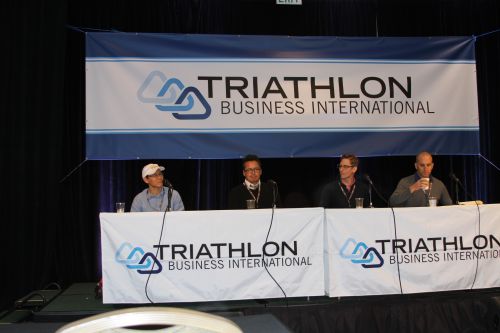MARINA DEL REY, Calif. (BRAIN) — The challenge of doing business in a rapidly changing retail environment was the central topic of the State of Multisport Retail panel at the Triathlon Business International North American Annual Conference held in Los Angeles this week.
Moderated by Seton Claggett of Trisports.com, the panel included retailers representing various channels, from brick-and-mortar multi-sport to heavy Internet hitters Amazon.com and Backcountry.com/Competitivecyclist.com.
The panel discussed the exponential growth of online commerce at length, with most members in agreement that as more dollars are spent online, the consumer is increasingly price-driven and more educated about the products they are buying.
"The pace won't slow down," said Paul Calandrella, cycling retail manager at Amazon.com. "Amazon's main focus is serving the customer and will continue to innovate to meet their needs."
"But online retail doesn't have to kill brick-and-mortar," said Brendan Quirk, executive vice president of Backcountry.com. "There is room for everyone."
Lloyd Taylor, CEO of Triathlon Lab, a multi-sport retailer with two stores in Southern California and an online store, said that the key for the brick and mortar's success is providing exceptional customer service. "There is potential for growth for the IBD to create new customers," he said. "But we have to focus on interaction—and provide a host of services—to draw them in. Walking into our store has to be a great experience."
Claggett asked retailers what they are doing on a grass roots level to grow their customer base. Responses ranged from sponsoring events and athletes to, as in the case of Amazon, taking on experimental partnerships with advocacy groups in Seattle, where the company is based. Jerry Cheng, principal at Onetri.com, said that online retailers can still be involved by going to races and supporting clubs.
"The pace won't slow down," — Paul Calandrella, cycling retail manager at Amazon.com.
MAP policy was also a core focus of the discussion, with the panel largely agreeing that the onus is on manufacturers to set and monitor pricing. "There has to be a balance between retailers and manufacturers to figure out how to work together," said Cheng. "Retailers have to live with the environment that exists and follow what the customer is doing. But the manufacturer has to be the one to protect MAP pricing."
Triathlon Lab's Taylor said price matching has become the norm at his two brick-and-mortar stores. "We have a robust price matching policy," he said. "Our consumers are price-driven, and we won't let that person leave the store."
In the interest of protecting the customer, Amazon also follows the marketplace when it comes to pricing. "It's a core tenet of our business," said Calandrella. "And it's a trust buster for us if we go in the other direction."




